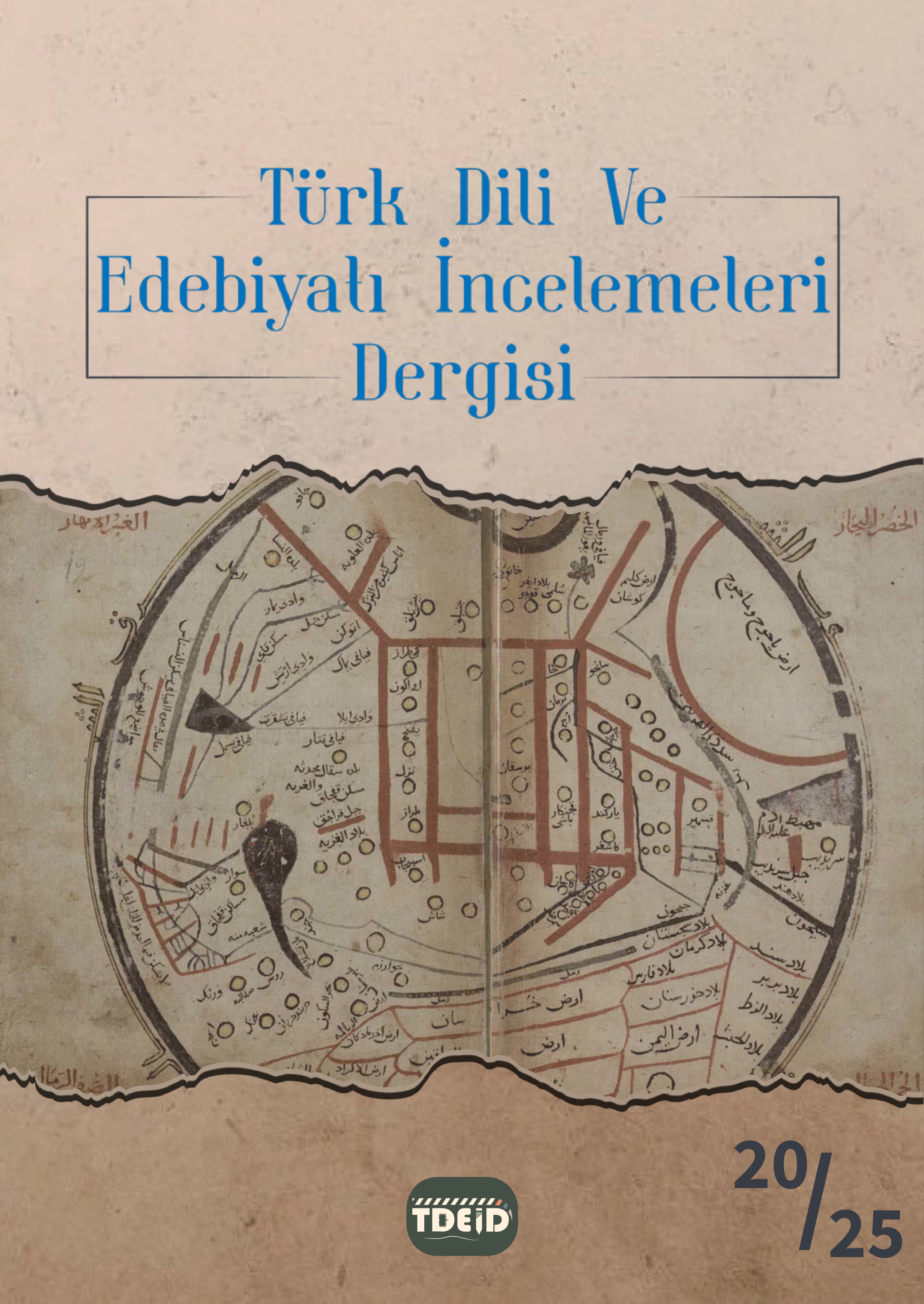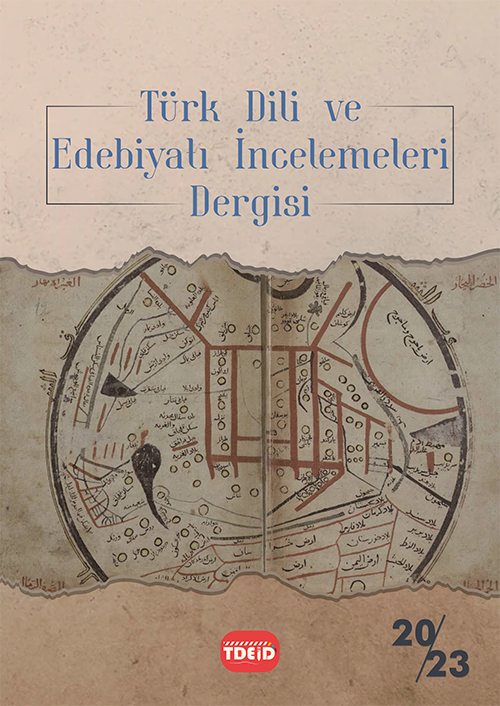"An Analysis of 'Ne' and Words Beginning with 'Ne+' in Kutadgu Bilig"
DOI:
https://doi.org/10.5281/zenodo.15837330Keywords:
Kutadgu Bilig, Yusuf Has Hacib, "ne" structureAbstract
Written in the 11th century by Yusuf Has Hacib, Kutadgu Bilig is recognized as the first major work of Islamic Turkish literature and a pioneering example of the "mirror for princes" genre. This verse-based composition consists of 6,645 couplets and 173 quatrains embedded throughout the text. Composed in the mesnevi style and following the aruz meter “fe‘ulün / fe‘ulün / fe‘ulün / fe‘ul,” the work stands out for its didactic nature. Through its allegorical structure, it conveys an ideal vision of governance via the characters of Kün Togdı, Ay Toldı, Ögdülmüş, and Odgurmış. The dialogue-based structure of the work lends it a theatrical quality. This study aims to examine the usage of the word "ne" considered to be of Turkic origin and its derived forms as they appear in Kutadgu Bilig within a historical linguistic framework. The main objective is to uncover how "ne" and "ne+" constructs have evolved semantically, morphologically, and etymologically, and to compare their usage across different language stages and Turkic dialects. For this purpose, a textual analysis of Kutadgu Bilig was conducted to identify relevant examples, followed by descriptive and comparative literary examination. The study concludes that the "ne" construction serves not only as an interrogative element but also fulfills emphatic, comparative, and conjunctive functions within the work. Furthermore, it is demonstrated that this structure has been a significant component in shaping the expressive capacity of the Turkish language throughout its historical development.
References
Arat, Reşit Rahmeti. (2006). Kutadgu Bilig, İstanbul: Kabalcı Yayınevi.
Argunşah, Mustafa. (2015). Çağatay Türkçesi, İstanbul: Kesit Yayınları.
Argunşah, Mustafa-Yüksekkaya Sağol, Gülden. (2021). Karahanlıca Harezmce Kıpçakça Dersleri, İstanbul: Kesit Yayınları.
Aydın, Erhan. (2015). Orhon Yazıtları, Konya: Kömen Yayınları.
Caferoğlu, Ahmet. (2015). Eski Uygur Türkçesi Sözlüğü. 3. Baskı Ankara: Türk Dil Kurumu.
Derleme Sözlüğü: Türkiye’de Halk Ağzından.-3. bsk.-Ankara: Türk Dil Kurumu, 2009.
Ercilasun, Ahmet Bican. (2012). Türk Lehçeleri Grameri, Ankara: Akçağ Yayınları.
Ercilasun, Ahmet Bican. (2024) Türk Dili Tarihi, Ankara: Akçağ Yayınları.
Erdal, Marsel. (1985). Kutadgu Bilig’de Değişkin Ekler ve Kelimeler, Beşinci Milletler Arası Türkoloji Kongresi.
Gökyay, Orhan Şaik. (2007). Dedem Korkudun Kitabı, İstanbul: Kabalcı Yayınevi.
Gülensoy, Tuncer. (2007). Türkiye Türkçesindeki Türkçe Sözcüklerin Köken Bilgisi Sözlüğü, İstanbul: Bilge Kültür Sanat.
Güner, Galip. (2020). Kıpçak Türkçesi Grameri, Ankara: Türk Dil Kurumu.
Hacıeminoğlu, Necmettin. (2019). Karahanlı Türkçesi Grameri, Ankara: TDK Yayınları.
Keskin, Esra Gül. (2020). Türkçede Birleşik Ekler, İstanbul: Kesit Yayınları.
Kurnaz, Cemal. (2001). Eski Türk Edebiyatı, İstanbul: Bilge Kültür Sanat.
Ölmez, Mehmet. (2017). Köktürkçe ve Eski Uygurca Dersleri, İstanbul: Kesit Yayınları.
Öztürk, Erol. (2017). Eski Anadolu Türkçesi El Kitabı, Ankara: Akçağ Yayınları.
Zengin, Aslı. (2021). Kutadgu Bilig’de Yaz_/Yazıl_ Filleri. Türk Dili ve Edebiyatı Dergisi, S 2, s. 53-74.
www.tdk.gov.tr. “Ne, nasıl, niçin, niye, neden, neye, nice, ne kadar, nere, nerede, nereli, neyse” maddeleri (erişim tarihi 16.01.2025)
Yusuf Has Hacib. (2015). Kutadgu Bilig: Metin (Haz. Mustafa S. Kaçalin). T.C. Kültür ve Turizm Bakanlığı. Kutadgu Bilig
Downloads
Published
How to Cite
Issue
Section
License
Copyright (c) 2025 Türk Dili ve Edebiyatı İncelemeleri Dergisi

This work is licensed under a Creative Commons Attribution 4.0 International License.







